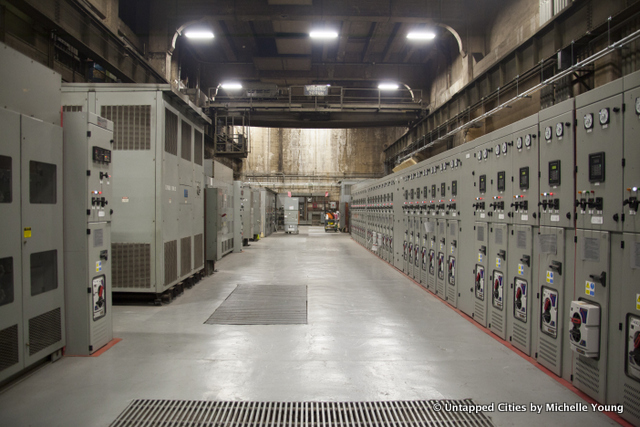Ten stories beneath the bustling platforms of Grand Central Terminal lies a basement so secret that had you ventured down their some years ago you would have risked being shot on sight. The trigger-finger guards on duty would have had no qualms about protecting the basement’s prized contents–a series of rotary converters–at all costs. But today, at a time when these converters have long since been shut off, the Science Channel has taken a bold journey down the freight elevator to this once strategic location in order to better understand its significance.
This four-minute episode gives viewers a rare glimpse at the chamber that houses these converters, which powered large portions of the electrified New York Central Railroad that was based out of Grand Central. Engineers were initially forced to dig down rather than build up to house these converters, as real estate developers found the land immediately adjacent to the rail terminal highly valuable.

But these circumstances turned out to be fortuitous, as years later during World War II, the fragile converters became the targets of enemies who found them to be more valuable than any other piece of real estate. German spies hoping to thwart the movement of troops around the Northeast United States were sent on U-boats to sneak into New York by way of nightfall and sabotage the converters with the most treacherous weapon possible, sand. That alone could have caused them to short circuit, crippling the backbone of what was at the time was one of the most expansive railroads in North America.

Luckily, the spies were spotted coming ashore by a U.S. Coast Guard operative on patrol, and the FBI tracked them through the city until they were arrested. Today, these converters remain in place, though nonoperational, as a nod to their historic significance. The 22,000 square foot room in which they sit is still powered and open to the select few who hold the secret and, of course, the keys.






